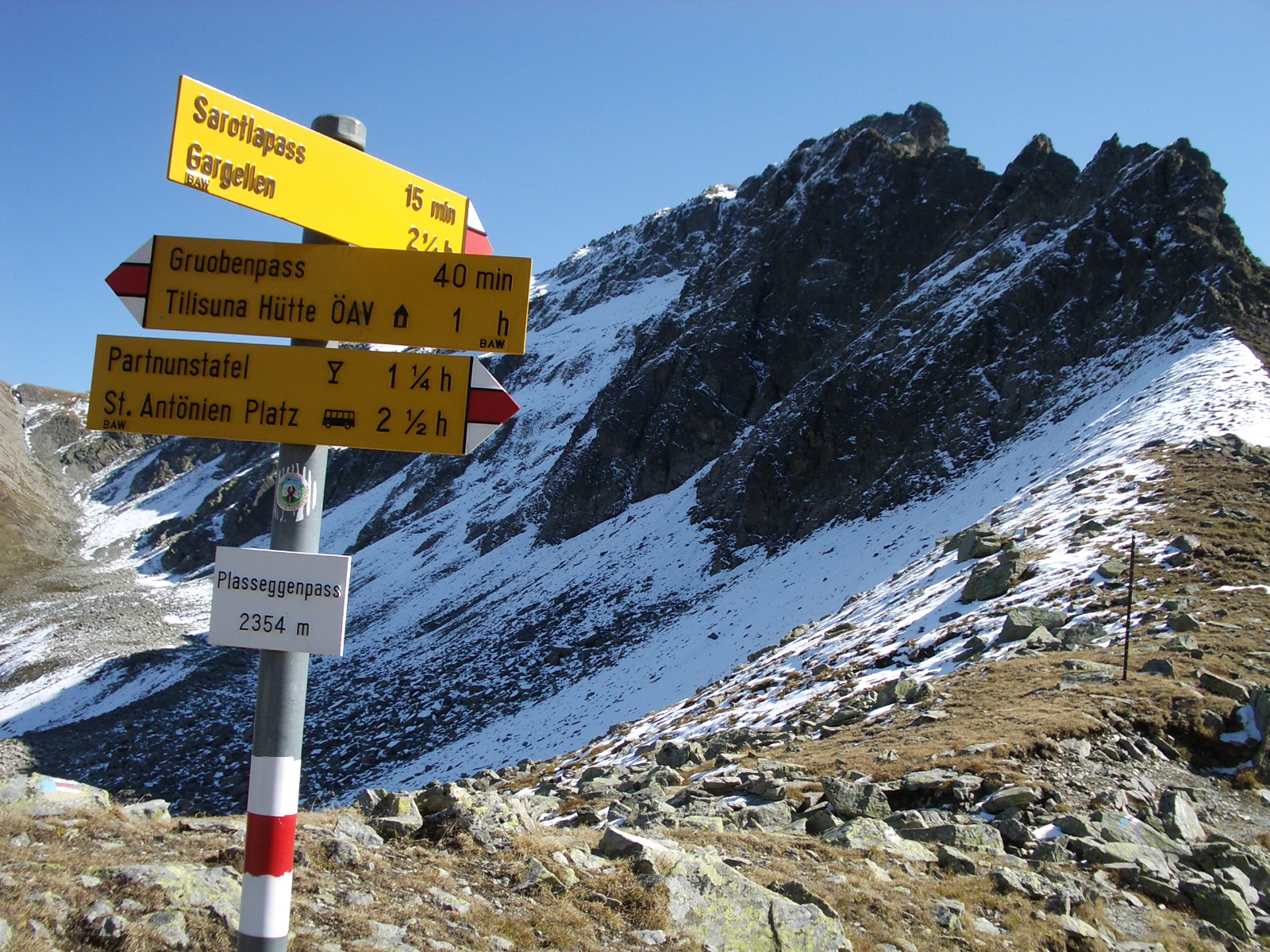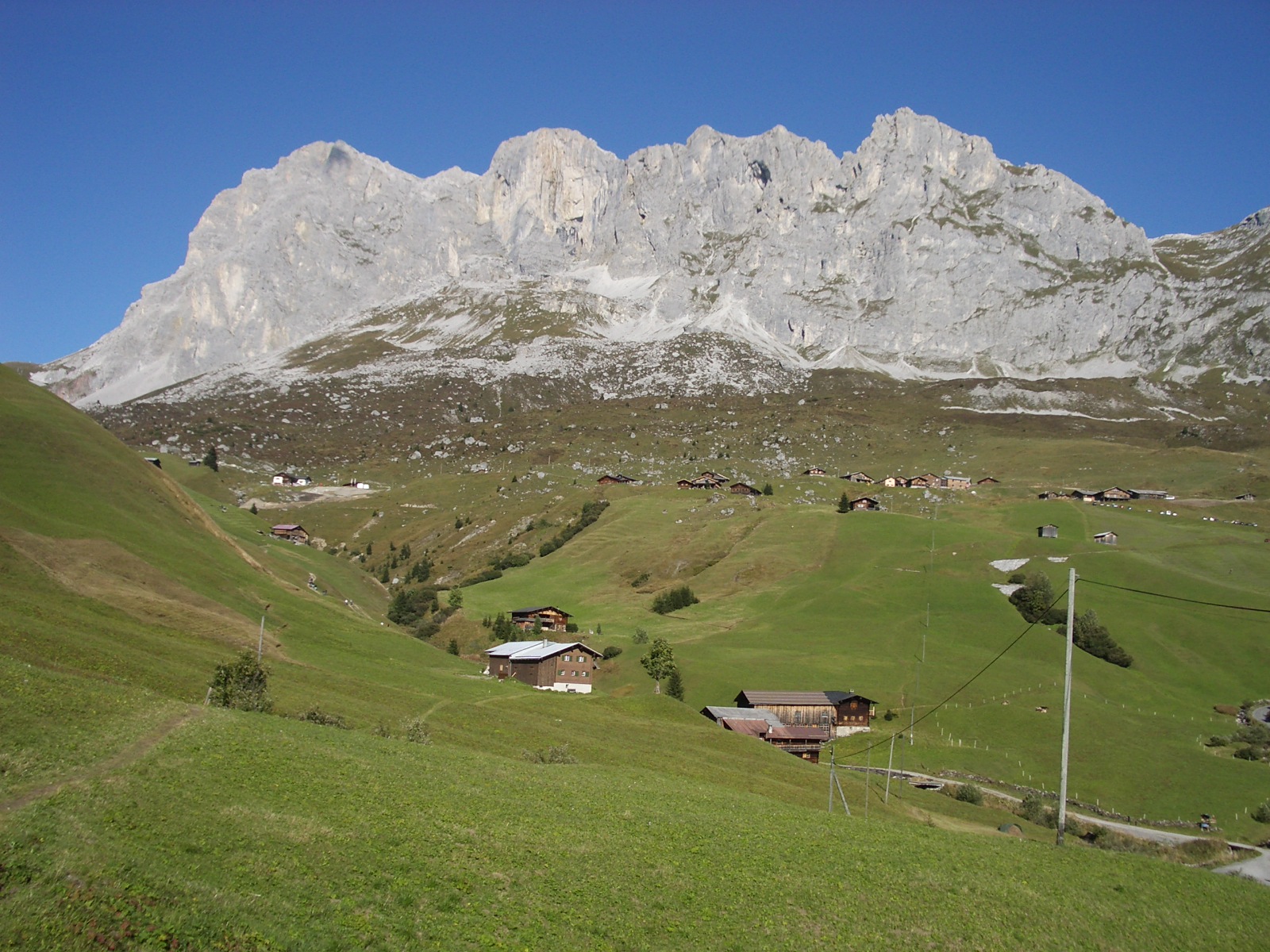St. Antönien on:
[Wikipedia]
[Google]
[Amazon]
St. Antönien is a
published by the Swiss Federal Statistical Office accessed 23 September 2009

 The village has been a minor tourism destination since 1891 when 30 to 40 guests stayed in homes that were empty due to the summer pasturing. Today there are hotels and about 20 rental properties with about 500 beds. The Pisten ski slopes opened in 1974 with the construction of the Skilift Junker. In the 1980s there were a record 50,000 lodger-nights per year, while in the 2000s it has dropped to about 30,000. The valley is firstly known for mountain climbing on the
The village has been a minor tourism destination since 1891 when 30 to 40 guests stayed in homes that were empty due to the summer pasturing. Today there are hotels and about 20 rental properties with about 500 beds. The Pisten ski slopes opened in 1974 with the construction of the Skilift Junker. In the 1980s there were a record 50,000 lodger-nights per year, while in the 2000s it has dropped to about 30,000. The valley is firstly known for mountain climbing on the
Swiss inventory of cultural property of national and regional significance
21.11.2008 version, accessed 29-Oct-2009
accessed 29-Oct-2009 , the gender distribution of the population was 51.9% male and 48.1% female.Graubunden in Numbers
accessed 21 September 2009 The age distribution, , in St. Antönien is; 44 children or 19.1% of the population are between 0 and 9 years old and 24 teenagers or 10.4% are between 10 and 19. Of the adult population, 20 people or 8.7% of the population are between 20 and 29 years old. 40 people or 17.4% are between 30 and 39, 30 people or 13.0% are between 40 and 49, and 27 people or 11.7% are between 50 and 59. The senior population distribution is 19 people or 8.3% of the population are between 60 and 69 years old, 24 people or 10.4% are between 70 and 79, there are 2 people or 0.9% who are between 80 and 89.Graubunden Population Statistics
accessed 21 September 2009 In the
Official Web site
* {{DEFAULTSORT:S Antonien Luzein Former municipalities of Graubünden Cultural property of national significance in Graubünden
Swiss
Swiss may refer to:
* the adjectival form of Switzerland
* Swiss people
Places
* Swiss, Missouri
* Swiss, North Carolina
*Swiss, West Virginia
* Swiss, Wisconsin
Other uses
*Swiss-system tournament, in various games and sports
*Swiss Internation ...
village in the Prättigau
The Prättigau, in the canton of Graubünden (Grisons), Switzerland, is the geographical region consisting of the main valley of the river Landquart (river), Landquart and the valleys of its side-rivers and creeks. Landquart River, which drains in ...
and a former municipality in the political district of Prättigau/Davos in the canton
Canton may refer to:
Administrative division terminology
* Canton (administrative division), territorial/administrative division in some countries, notably Switzerland
* Township (Canada), known as ''canton'' in Canadian French
Arts and ent ...
of Graubünden.
The municipalities of St. Antönien (242 inhabitants) and St. Antönien Ascharina
St. Antönien Ascharina is a former municipality in the Swiss
Swiss may refer to:
* the adjectival form of Switzerland
* Swiss people
Places
* Swiss, Missouri
* Swiss, North Carolina
*Swiss, West Virginia
* Swiss, Wisconsin
Other uses
*Swiss-s ...
(118 inhabitants) merged on 1 January 2007 into St. Antönien. Later, on 1 January 2016, it merged with the municipality
A municipality is usually a single administrative division having corporate status and powers of self-government or jurisdiction as granted by national and regional laws to which it is subordinate.
The term ''municipality'' may also mean the go ...
of Luzein.
History
St. Antönien is first mentioned in 1451 as ''Sant Anthonyen''. Earlier, the area was worked by romansh speaking inhabitants of the lower valleys as the names of the places indicate. Around 1400 Walser people that came from the Klosters area were allowed to settle in the higher areas at the end of the valley. So the Walser settled in the valley top first, advancing to lower areas later. The Walser also brought with them the Valliser style of house, which uses more wood than stoneGeography
St. Antönien has an area, , of with settlements reaching as high as roughly 1800 meters at ''Gafia'' and ''Partnun''. Of this area, 51.6% is used for agricultural purposes, while 11.4% is forested. Of the rest of the land, 0.9% is settled (buildings or roads) and the remainder (36.1%) is non-productive (rivers, glaciers or mountains). The municipality is located in the Luzein sub-district of the Prättigau/Davos. It consists of the village of St. Antönien which was created in 1979 by the merger of St. Antönien Castels and St. Antönien Rüti. In 2007 St. Antönien Ascharina merged into St. Antönien.Amtliches Gemeindeverzeichnis der Schweizpublished by the Swiss Federal Statistical Office accessed 23 September 2009
Tourism

 The village has been a minor tourism destination since 1891 when 30 to 40 guests stayed in homes that were empty due to the summer pasturing. Today there are hotels and about 20 rental properties with about 500 beds. The Pisten ski slopes opened in 1974 with the construction of the Skilift Junker. In the 1980s there were a record 50,000 lodger-nights per year, while in the 2000s it has dropped to about 30,000. The valley is firstly known for mountain climbing on the
The village has been a minor tourism destination since 1891 when 30 to 40 guests stayed in homes that were empty due to the summer pasturing. Today there are hotels and about 20 rental properties with about 500 beds. The Pisten ski slopes opened in 1974 with the construction of the Skilift Junker. In the 1980s there were a record 50,000 lodger-nights per year, while in the 2000s it has dropped to about 30,000. The valley is firstly known for mountain climbing on the limestone
Limestone ( calcium carbonate ) is a type of carbonate sedimentary rock which is the main source of the material lime. It is composed mostly of the minerals calcite and aragonite, which are different crystal forms of . Limestone forms whe ...
peaks of the Rätikon mountain range of which nearby Sulzfluh
The Sulzfluh is a mountain in the Rätikon range of the Alps, located on the border between Austria and Switzerland. The closest locality is St. Antönien, on the southern side.
It is well known by climbers and has a Via ferrata on the souther ...
hosts Via Ferrata
A via ferrata (Italian for "iron path", plural ''vie ferrate'' or in English ''via ferratas'') is a protected climbing route found in the Alps and certain other locations. The term "via ferrata" is used in most countries and languages except n ...
in its southern face that was opened in 2005. Non climbers go skiing, ski touring or hiking along the whole of the impressive Rätikon mountains. Even though the first impression from the St. Antönien side would not seem to allow this, it is nevertheless possible to reach some of the summits on mountain paths without climbing.
Heritage sites of national significance
The ''House with Barn'' at Berawis 68 is listed as a Swiss heritage site of national significance.21.11.2008 version, accessed 29-Oct-2009
Demographics
St. Antönien has a population (as of ) of . , 4.0% of the population was made up of foreign nationals. Over the last 10 years the population has decreased at a rate of -0.3%. Most of the population () speaks German (97.7%), with Albanian being second most common ( 1.4%) and Romansh being third ( 0.3%).accessed 29-Oct-2009 , the gender distribution of the population was 51.9% male and 48.1% female.Graubunden in Numbers
accessed 21 September 2009 The age distribution, , in St. Antönien is; 44 children or 19.1% of the population are between 0 and 9 years old and 24 teenagers or 10.4% are between 10 and 19. Of the adult population, 20 people or 8.7% of the population are between 20 and 29 years old. 40 people or 17.4% are between 30 and 39, 30 people or 13.0% are between 40 and 49, and 27 people or 11.7% are between 50 and 59. The senior population distribution is 19 people or 8.3% of the population are between 60 and 69 years old, 24 people or 10.4% are between 70 and 79, there are 2 people or 0.9% who are between 80 and 89.Graubunden Population Statistics
accessed 21 September 2009 In the
2007 federal election
This electoral calendar 2007 lists the national/federal direct elections held in 2007 in the de jure and de facto sovereign states and their dependent territories. Referendums are included, although they are not elections. By-elections are not i ...
the most popular party was the SVP which received 58.4% of the vote. The next three most popular parties were the FDP (29.8%), the SP (7.7%) and the local, small right-wing parties (3.1%).
In St. Antönien about 48% of the population (between age 25-64) have completed either non-mandatory upper secondary education or additional higher education (either university or a ''Fachhochschule
A ''Fachhochschule'' (; plural ''Fachhochschulen''), abbreviated FH, is a university of applied sciences (UAS), in other words a German tertiary education institution that provides professional education in many applied sciences and applied arts ...
'').
St. Antönien has an unemployment rate of 0.2%. , there were 89 people employed in the primary economic sector and about 34 businesses involved in this sector. 8 people are employed in the secondary sector
In macroeconomics, the secondary sector of the economy is an economic sector in the three-sector theory that describes the role of manufacturing. It encompasses industries that produce a finished, usable product or are involved in construction. ...
and there are 3 businesses in this sector. 57 people are employed in the tertiary sector, with 18 businesses in this sector.
The historical population is given in the following table:
References
External links
Official Web site
* {{DEFAULTSORT:S Antonien Luzein Former municipalities of Graubünden Cultural property of national significance in Graubünden